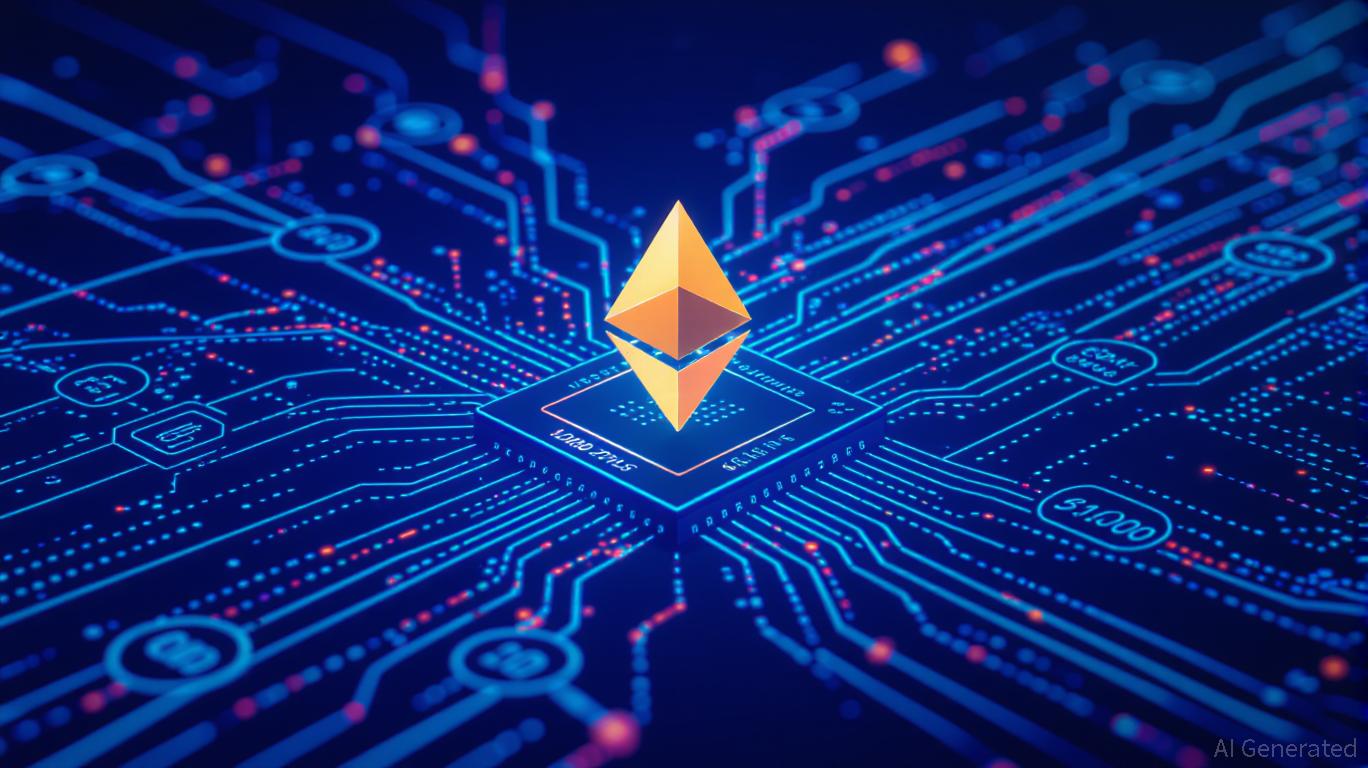Vitalik Buterin Backs ZKsync: Driving Layer 2 Expansion and Unlocking Investment Opportunities
- Vitalik Buterin's endorsement of ZKsync's Atlas upgrade validates its technical innovation, boosting institutional interest and investor confidence. - The upgrade enables direct Ethereum liquidity access, achieving 15,000+ TPS and near-zero fees, positioning ZKsync as a key Layer 2 infrastructure. - Buterin's backing triggered a 120% token price surge and $600M market cap, highlighting its potential to dominate Ethereum's scaling solutions. - ZKsync's tokenomics overhaul prioritizes buybacks and staking
The recent show of support for
Technical Innovations: Atlas Upgrade Transforms Ethereum Liquidity
Launched in late October 2025, ZKsync’s Atlas upgrade marks a significant leap in blockchain capabilities. By allowing Layer 2 chains to tap directly into Ethereum’s liquidity, the upgrade does away with fragmented liquidity pools, making cross-chain operations more efficient and reducing capital waste, according to the
This advancement supports Ethereum’s broader ambition to serve as a real-time liquidity center. According to Alex Gluchowski, ZKsync’s founder, the upgrade’s enterprise-level scalability and interoperability address major challenges in decentralized finance (DeFi) and business adoption, as highlighted in a

Market Impact: Buterin’s Support Triggers 120% Price Rally
Buterin’s backing led to a swift and notable reaction in the market. ZKsync’s token value soared by 120% within two days, peaking at $0.74 by the end of October 2025, based on a
This price movement demonstrates growing investor confidence in ZKsync’s potential to secure a substantial portion of Ethereum’s Layer 2 ecosystem. Although the token later corrected to $0.051, technical signals such as the Aroon and RSI indicate a possible recovery to $0.085, fueled by ongoing demand for scalable solutions, according to the
Tokenomics Overhaul: Evolving from Governance to Value-Driven Asset
Alongside these technical strides, ZKsync’s founder has suggested a major revamp of the
This change reflects the successful tokenomics seen in projects like
Adoption Trends: Growth and Ongoing Challenges
Despite ZKsync’s impressive technical and economic advancements, adoption figures show a mixed picture. The number of daily active addresses rose by 26% in the month after Buterin’s endorsement, yet remains modest at 10,400, according to a
The introduction of Prividium, a private Layer 2 network designed for institutions, has further accelerated adoption. More than 30 leading organizations, including Citi and Mastercard, have already adopted the platform, indicating ZKsync’s potential to connect traditional finance with blockchain technology, as detailed in a
Summary: The Power of Architect Endorsement in Driving Adoption
Vitalik Buterin’s support for ZKsync illustrates the significant impact that validation from leading crypto figures can have on real-world adoption and investment. By endorsing ZKsync’s technical strengths and economic framework, Buterin has not only enhanced the project’s reputation but also underscored its importance in Ethereum’s roadmap. As Layer 2 solutions become ever more vital for Ethereum’s scalability and integration of real-world assets, platforms like ZKsync—backed by both innovation and influential leaders—are well-positioned to lead the market.
For investors, the blend of robust infrastructure, deflationary tokenomics, and strategic alliances makes ZKsync a standout example of how recognition from top industry minds can drive substantial value creation.
Disclaimer: The content of this article solely reflects the author's opinion and does not represent the platform in any capacity. This article is not intended to serve as a reference for making investment decisions.
You may also like
JPMorgan and DBS Develop Cross-Chain Bridge to Compete with Stablecoin Leaders
- JPMorgan and DBS Bank launch cross-chain framework for real-time tokenized deposit transfers between institutional clients, bypassing traditional payment systems. - The "interoperability highway" enables 24/7 settlements across public/private blockchains while maintaining consistent token value, expanding cross-border transaction capabilities. - As 1/3 of global banks explore tokenized deposits, the partnership challenges stablecoin dominance by offering institutional-grade cross-chain solutions with red
AI's Growing Demand for Power Pushes the Energy Industry Into an Intense Sustainability Competition
- Energy and tech sectors collaborate to address AI's surging energy demands through sustainable computing infrastructure and efficient GPU solutions. - Devon Energy and Alliant Energy boost capital spending on grid modernization and storage, aligning with AI-driven power needs while maintaining shareholder returns. - NVIDIA advances open-source GPU efficiency via Nova driver, yet faces market volatility as AI sector grapples with financial risks and regulatory pressures. - Industry challenges include bala

ZEC drops 11.51% over 24 hours, Large Holder Movements and Accumulation Patterns Indicate Market Fluctuations
- ZEC fell 11.51% in 24 hours as a major whale liquidated 30,000 ZEC ($960K), facing 46% unrealized losses and a $420 liquidation price. - Binance saw $30M ZEC accumulation via coordinated whale buys, while the largest short position (0xd47) reduced losses to $10.87M amid ongoing bearish bets. - Zcash’s November 2025 halving will cut block rewards by 50%, boosting scarcity, while Grayscale’s $137M Zcash Trust highlights growing institutional interest. - Privacy-focused Zcash gains regulatory clarity under
Bitcoin News Update: Short Sellers Hit Hard as $341M in Crypto Liquidations Sparks Volatility Spike
- Bitcoin's $106,000 surge triggered $341.85M in crypto liquidations, with short sellers losing $106.75M as leverage-driven volatility spiked. - Senate's shutdown resolution boosted Bitcoin 3.93% in 24 hours, alleviating regulatory uncertainty and injecting market optimism. - Hyperliquid's $18.96M single liquidation highlighted risks of 1,001:1 leverage, as platforms amplified price swings through stop-loss mechanisms. - November's $20B in crypto derivatives liquidations revealed systemic fragility, with E